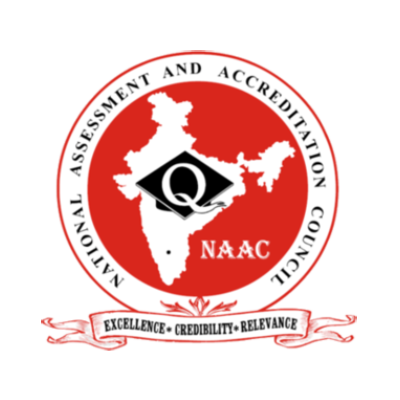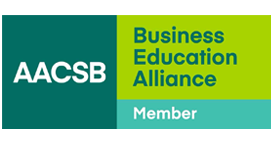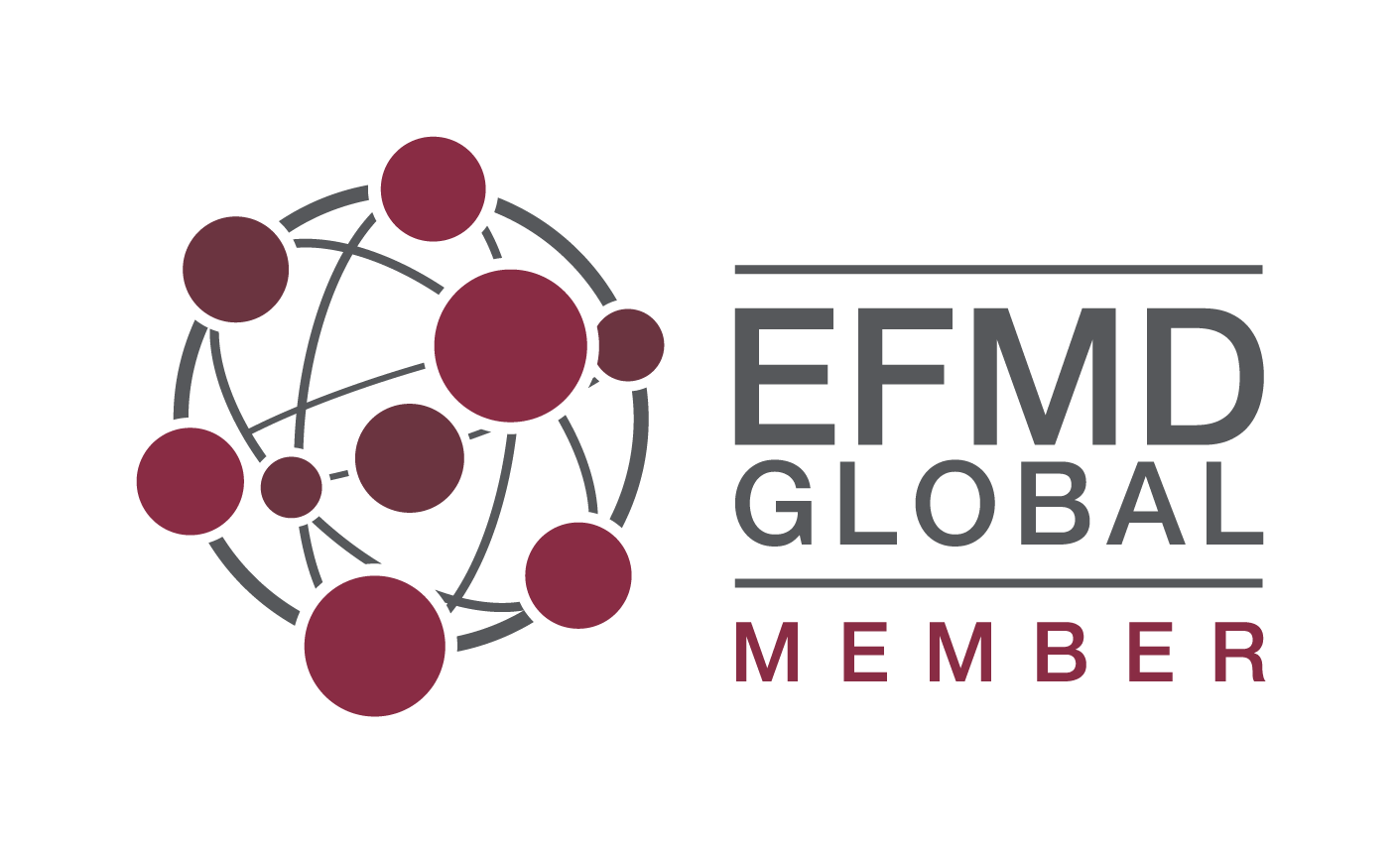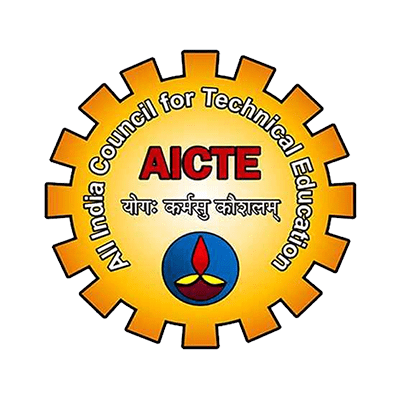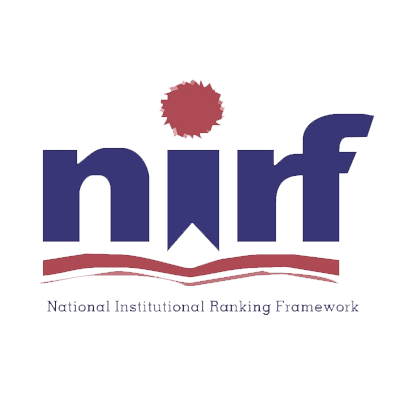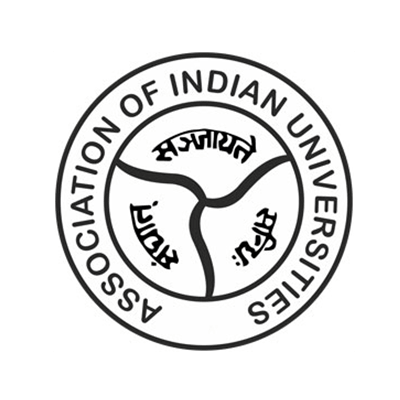Our PGDM 2012-14 batch student Abhishek Kumar Jha participates in an essay competition – “Bengal Matters”, organised by Calcutta Management Association (CMA).
Program Type: PGDM
The Telegraph, dated 18th October 2012 has the following article which features IMI-Kolkata.
Mr. Debabrata Sarkar, the Chairman & Managing Director, Union Bank of India, visited IMI-Kolkata campus on September 28, 2012. He delivered an elaborative and informative speech on the topic ‘Indian Economy: Role of Banking Sector’. Mr. Sarkar began his speech with an overview of the present state of the Indian economy. He put forward an optimistic view of the Indian economy and mentioned that despite all odds Indian economy is doing pretty well and its growth will continue in days to come. Thereafter he went on explaining that among the major contributors to the Indian GDP the services sector has surpassed the contributions of agriculture and manufacturing sectors. This feature of present Indian economy is very surprising since it defies the traditional theory of development where the services sector is supposed to become a forerunner only after the agriculture and industry sectors respectively have grown to their full potential. Within the services sector the banking sector has emerged as a key player. Banks have been able to spread its reach to the rural India to a greater extent. They are providing loans to the farmers and other small rural entrepreneurs on less stringent terms. At the same time they are strengthening the recovery process in order to retain a balance between inflow and outflow of funds. On a macro-level, this sector is making significant contribution in maintaining a sound monetary health of the economy. Banks are now using improved technologies to provide faster, safer and easy-to-access services to its customers. Apart from that the banks are focusing on various CSR activities in discharge of their duties towards the community and environment. On the flip side, however, the sector is facing some NPA problems, which are adversely affecting the financial status of the banks. After discussing all the aspects of the banking sector he concluded that notwithstanding the adversities the banks are gearing up to face the challenges of the present as well as the future.
IMI-K hosts the 82nd National Council Meeting for Indian Society for Training and Development (ISTD)
Senior HR professionals from leading corporates to brainstorm at IMI-Kolkata campus.
Leading corporate HR heads are meeting at the IMI-Kolkata campus on 2nd December, 2012 to discuss ‘Training Needs in Emerging Industries- a New Dimension’
The sub-themes to be deliberated are
Changing Training needs in Infrastructure and Energy Sector
Changing Training needs in Banking Sector
Changing training needs power sector
Changing training needs in Manufacturing sector
Changing labour relations ü Strategic HRM- envisioning the change that would come in future
Orchestrating and coordinating the different functional areas in an organization with HR ü Partnering in Progress— employees, employees’ family members and the external environment.
Confero 2012
- Post date November 12, 2020
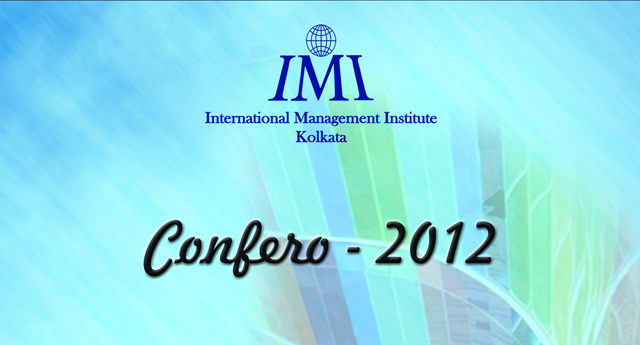
An inter-college quiz and debate competition titled Confero 2012 at IMI-Kolkata witnessed a gathering of some of the brightest students from different colleges and institutes on December 1, 2012. The debating teams came from Presidency University, St Xavier’s College, ShriShikshayatan College, IIFT Kolkata and IMI-Kolkata. They debated over two topics, “FDI in retail – A progressive step for India” and “Indian economy is more humane than Chinese economy”. The IMI-Kolkata auditorium turned into a battle ground of “Argumentative Indians” who left no stone unturned to prove their points and rebuttal that of their opponent.An eminent panel of judges constituting Dr. Subhendu Bose, Consultant PwC, Ms. Sharmistha Das, Senior Sub Editor, Telegraph and Dr. BuroshivaDasgupta, Professor Communications, IMI-Kolkata, evaluated the performance of participants.Presidency Universitytook the winner’s trophy. The 1st and the 2nd runner’s up were St. Xevier’s College and IMI-Kolkata respectively.
The quiz competition had 23 competing teams from 12 colleges and institutes including IIM Calcutta, IFT Kolkata, Presidency University, St. Xavier’s College, Jadavpur University, ShriShikshayatan College,IBS Kolkata, Calcutta Medical College, , and Heritage Institute of Technology, Bhawanipur Education Society College and Ashutosh Collegein the preliminary round. Only 6 could make it to the finals. They werePresidency University, St. Xavier’s College, Jadavpur University, IIM Calcutta,IIFT Kolkata and Heritage Institute of Technology. Mr. KunalMondal, quiz master, conducted some enthralling quizzing rounds. Again Presidency University stole the show.

Meeting the Fiscal Challenges
As a continuation of the Distinguished Guest Lecture Series on December 8, 2012 Mr. Sumit Bose IAS, Secretary to Govt.of India (Revenue), delivered a lecture on “Meeting the Fiscal Challenges” at the IMI- Kolkata auditorium. Dignitaries from public and private sector undertakings were present in the occasion. Mr. Sunil Mitra, Former Secretary to the Govt. of India (Revenue), introduced the speaker to the august gathering.
Mr. Bose began his talk with a portrayal of the current global economic crisis and consequent slowdown. He further elaborated on the position of Indian economy in this critical time and the challenges the country is facing in consolidating the fiscal front. Delving deep into the revenue and the expenditure sides of government budget he expounded the various reforms measures that Government of India with the recommendations of 13th Planning Commission and Kelker Committee Report is ushering in to bring the fiscal deficit within a permissible limit. The highlights of his lecture were:
The fiscal challenge in a developing economy like India arises from a global economic downturn.
The Fiscal Responsibility and Budget Management Act (FRBM) framework has been constituted to effectively control State and Centre expenditure.
Kelkar Committee’s recommendation for tax reforms is expected to increase revenue collection substantially.
The introduction of the Adhaar or Unique Identification Numbers for the ration-card holders, grant-in-aid schools, scholarship holders, pensioners etc. has a great potential to remove duplication and save upon wastage.
Devolution of funds from Centre to the State and to the local bodies has been streamlined and incentivized in the form of performance grants.
Mr. Bose emphasized on the importance of technology in improving the efficiency of government services both at centre and state levels.
The lecture session was followed by an engrossing question and answer session.
Its Problem & Solution
Performance appraisal is an important managerial instrument to clarify performance criteria and enhance future employee performance. It provides a justification for human resource decision such as rewards, career planning, transfers, training, counselling, mentoring, termination etc. Basic purpose of performance appraisal is to identify the relative worth or ability of an individual employee in performing his tasks. If objectively done, the appraisal can to differentiate between high and low performer.
For differentiating between performers, broadly we can categorize performance evaluation system in two ways: absolute grading and relative grading. In absolute grading system individual performance is compared with a pre-determine standard, whereas a relative grading system determines relative position of an employee by comparing them against each other. Bell shaped curve is considered as one of the forced distribution methods based on relative grading system. This system was introduced by Jack Welch in the beginning of his tenure at General Electric (GE) under the name of “Vitality Curve”. Welch introduced this system to develop an objective measure to discriminate between high and low performer; so that the culture of ‘rewarding doers’ can be established, which in turn can be helpful for ‘building muscle’ of the organization. GE and many other organizations consider bell shaped curve for evaluating employee’s performance as a developmental instrument of achieving a performance oriented culture.
Bell shaped curve system rates the entire workforce by comparing the performance of those engaged in similar activities and ranking them on the basis of their performances. As a result, the entire workforce is segregated into different groups. For instance, the employees of an organization can be classified into three groups labelled as top performers, medium performers and poor performers. The number of groups and the proportions of employees in different groups vary according to the company policy. Employees belonging to the higher grades (labelled as top performers) are supposed to have significant contribution to the companies. They are showered with rewards, which acts as a continuous source of motivation to them. The numbers of employees in the middle group are usually higher. They are supposed to be weaker in certain areas which may be improved through appropriate training. The performances of the employees belonging to lower grades are considered to be unsatisfactory. For them, performance appraisal works as a warning bell and it reminds them about their poor ranking (in terms of performance) compared to their colleagues involved in the same types of activities.
In India, we have already observed the wide use of bell shaped curve in IT sectors to categorize employee’s performance in different levels and accordingly determine the future course of action. For Indian public sector undertaking companies like ONGC, BCCL, HCL, CIL, SAIL etc. where large number of employees are involved, it is highly important to adapt such type of forced distribution system that can categorize the performers in different levels. This process may be extremely helpful for managing and retaining talented employees as well as setting up a performance oriented culture in Indian public sector undertaking companies.
Though Bell Curve system of performance appraisal provides the momentum to employee to move forward and aiming high, still many researchers and practitioners have identified some major drawbacks in this method of appraisal. According to their opinions, as the Bell curve is applicable to individual department or team or function, there is a high chance that low performing member in the high performing group may be better than the best performer in the average performing group. Because of the rigidity of this appraisal system, companies are ringing their warning bell to all bottom performers of each and every group. As a result, some potential performers are leaving the organization either voluntarily (due to dissatisfaction) or involuntarily which may not be always beneficial from organizational point of view.
Moreover, it is assumed that the bottom performers are replaced every year on account of their unsatisfactory performance by fresh talent who can add up to the output of the organization, here we may argue that the likelihood of presence of poor performers amongst the new addition is another possibility which can adversely affect the system. Moreover, from the financial point of view, replacement of the employee with the fresh talent is also a costly affair.
In our research on forced distribution system, we have mathematically demonstrated serious limitations of the method and proposed a simple modification to overcome these limitations. Instead of using the grades directly as a performance evaluation indicator, we have converted the grades into scores in each group by using Likert’s scaling method. Then, these scores are used to estimate the average performance of each group of employees, which we termed as group index. Taking these group indices into consideration, we have proposed a modified performance score for each employee. To explore the properties of the proposed model, we have carried out extensive simulation studies for different types of allocations of employees in different projects. For judging the efficiency of the new model, we have calculated employee’s performance by using existing method and the proposed method and compared them by using an appropriate statistical technique. Results indicate that our model works significantly better in all types of employee-allocation.
To set up a performance oriented culture, it is highly important to use any type of forced distribution system for ultimate categorization of employee’s performance. But due to some negative consequences in forced distribution system, many organizations are not very proactive to adapt this method. Our proposed modification will definitely provide a solution to this problem and help the organizations to adapt this system for managing employee’s performance.
Dr. Rachana Chattopadhyay
——————————————————————————————————–
For research details, see the following article:
R. Chattopadhyay and A. K. Ghosh (2012). “Performance appraisal based on a forced distribution system: its drawbacks and remedies”. International Journal of Productivity and Performance Management, 61(8), 881-896.
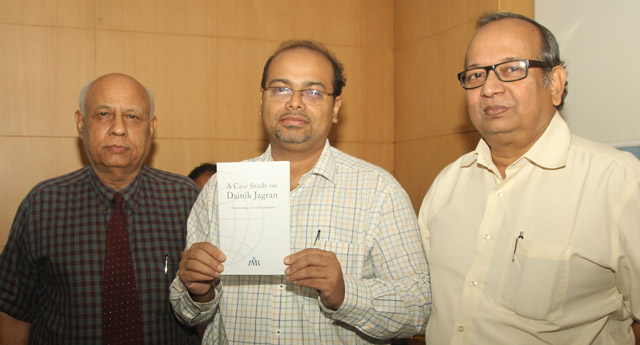
IMI Kolkata organized an invitation only event for releasing the case study titled ‘The March of Jagran: Realizing & Sustaining Market Leadership’, featuring the growth story of Dainik Jagran – a Hindi daily. The event was organized at IMI Kolkata campus on 2nd July, 2013. The event was attended by representatives from Jagran Prakashan Ltd., executives from the media fraternity, a faculty member from Colorado State University and faculty members from IMI Kolkata.
The case study developed by Dr. Tirthankar Nag, Dean(Academics) and Dr. Buroshiva Dasgupta, Professor, based on their study of Jagran Prakashan Ltd. is an effort to highlight the business side of the print media and shall be part of the curriculum at IMI Kolkata. This is an initiative of IMI Kolkata to bridge the academia industry gap and encourage the faculty members to carry out engagements with the industry and bring in real life decision making inside the classroom

Allahabad Bank, the oldest joint stock bank in India established in the year 1865,joins hand with IMI Kolkata to train their newly recruited probationary officers (PO). Allahabad Bank has recruited 1500 POs and IMI Kolkata has taken up the responsibility of imparting training to them in phases.
To initiate the endeavor 200 POs are undertaken for a 90-days completely residential induction programme at IMI Kolkata. The programme was inaugurated on July 1, 2013 by Shri Arun Tiwari, Executive Director, Allahabad Bank.
The main objective of the programme is to help the newly recruited POs in their transition from campus to corporate.The training will equip the POs not only to overcome professional obstacles but also to perform and progress in most effective and efficient manner.
The 90-days programme focuses on micro and macro concepts of economy, Indian banking history, regulatory framework, knowing different customers and banking products, cost management, risk management, social responsibility of a banker and financial inclusion. A substantial part of the programme will deal with details of lending, capacity building, credit monitoring, recovery management policy, MSME finance and FOREX. This also includes elaborated sessions on preventive vigilance and soft skills.
The programme draws its resources from the internal faculty strength of IMI Kolkata and major sessions on baking are handled by very senior and experienced professional from the banking industry.
Programme Directors: Dr. Nandita Mishra and Dr. Sarojakhya Chatterjee
National Symposium on Securities and Effectiveness of the Energy Sector
Keeping in view the dismal state of Indian economy arising out of ever mounting current account deficit resulting primarily from swelling oil import bill having a bearing on the inefficiency and inadequacy of the Indian energy sector to cater to the domestic demand, IMI Kolkata organized a two-day long symposium on August 7 – 8, 2013, titled ‘National Symposium on Securities and Effectiveness of the Energy Sector’ to bring into limelight the energy sector issues and brainstorm on them to find strings of solutions, which could later be transformed into policy decisions.
Mr. Alok Perti, Former Secretary, Ministry of Coal GoI as the programme advisor set the tone of the symposium by addressing the supply-demand issues of energy sector and raised question on the disjointed approach taken by different departments of government of India.
In his keynote address Mr. S. Narsing Rao, Chairman Coal India Ltd., presented the paradox that exists in the coal sector: despite shortage of power many high capacity power plants are being shut down and despite shortage of coal the salability of produced coal is under question. The root cause of all the evils is pin-pointed as the poor financial health of the discoms, which are unable to purchase power from the generating and transmitting companies leaving an adverse impact on coal demand.
The issues that were mainly discussed in the sessions of day one were:
- the conflict between traditional desirability and practical and economic feasibility in the power sector
- the role of a regulator in the energy sector and the challenges
- reaching excellence through improved customer connect: CESC as a case study
- the lender’s perspective on issues relating to power and coal sector
- capacity building though training and proposed plan to develop professionals specialized in the energy sector through post-graduate degrees and diplomas
- green energy
The sessions on day two focused on
- critical regulatory issues
- renewable and alternate energy
- investment, project appraisal and risk management
- managing performance excellence
The two-day symposium discussed the whole gamut of issues relating to the power and the coal sector of India, successfully located the areas of major concern and suggested practical and economically feasible solutions to improve the effectiveness and efficiency of the energy sector considered as the major propeller on India’s economic growth and development.
Day 1 speakers were:
- Mr. Alok Perti, Former Secretary, Ministry of Coal, GOI
- Mr. Gautam Ray, Executive Director (HR & Admin)
- Mr. S. Narsing Rao, Chairman Coal India Ltd.
- Mr. Anirudha Basu, Manging Director CESC Ltd.
- Mr. P.K Malhotra, DMD State Bank of India
- Mr. R.N. Parashar, Former Chairman, Haryana Electricity Regulatory Commission
- Dr. Ahindra Chakrabarti, Director IMI Kolkata
- Dr. Ajoy Ray, V.C. Bengal Engineering and Science University
Speakers on Day 2 were:
- Mr. R.N. Parashar
- Dr. Arindam Bank, Professor IMI Delhi
- Dr. Tirthankar Nag, Dean Academics, IMI Kolkata
- Mr. C. R. Bhowmik, Advisor WBSERC
- Mr. Sushobhan Bhattacharya, Director, WBREDA
- Mr. Asok Sinha,Former Director Finance, Coal India Ltd.
- Mr. Sujit Kumar Mondal
- Mr. Rajarshi Banerjee, Executive Director- Finance CESC Ltd.
- Mr. Sanjoy Chakraborti, Executive Director – Generation, CESC Ltd.



